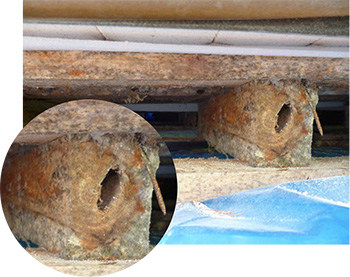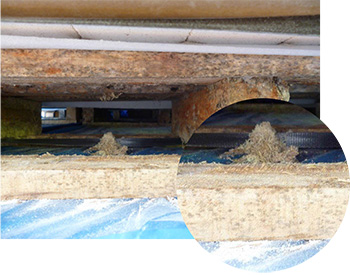Key points
- The brown mulberry longhorn beetle is a wood-boring insect that feeds on a number of hardwood trees
- The beetle attacks only living trees
- An adult beetle is about 26 to 50 millimetres long
- Its body is black and covered with tawny brown to slightly greenish hairs. The antennae are brownish black with whitish grey rings and can be up to one third longer than the body.
Brown mulberry longhorn beetle is a wood-boring pest that feeds on a number of hardwood trees including elm, fig, mulberry, poplar, pear, citrus, rosewood, hawthorn, lagerstroemia, mulberry, walnut, and willow. The potential effect of brown mulberry longhorn beetle on Australian native plants is not known.
Brown mulberry longhorn beetle occurs in a number of countries in the Asian region, including Myanmar, China, Japan, Korea, Vietnam, Malaysia, India, Pakistan, Taiwan and Thailand. Particularly in India and China it has been reported as a major pest of mulberry and poplar plantations.
The brown mulberry longhorn attacks only living trees. Like other longhorn beetles, brown mulberry longhorn adults lay eggs under the bark on host trees. After eggs hatch, the developing larvae feed under the bark forming tunnels or “galleries”. Later larval stages also bore into the woody tissue. Over time, the feeding activity of the larvae cause a decline in the health of trees and ultimately death.
What it looks like
An adult beetle is about 26 to 50 millimetres long. Its body is black and covered with tawny brown to slightly greenish hairs. The antennae are brownish black with whitish grey rings and can be up to one third longer than the body. The larvae look like grubs and can grow up to 70 millimetres long. Brown mulberry longhorn beetle eggs are about 8 to 9 millimetres long, with a brown tinge. Eggs are laid in slits made in the bark by the female adult beetle.

Timber pallet showing longhorn beetle damage

Timber pallet showing frass (sawdust-like shavings)
from longhorn beetle
What to look for and where
The beetle is most likely to arrive in imported timber and wood used for pallets and other packing materials from Asia. Look out for larval tunnels in the wood up to 15 millimetres wide, sawdust-like frass falling from damaged timber, and oval-shaped exit holes about 10 to 15 millimetres wide.
